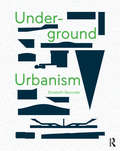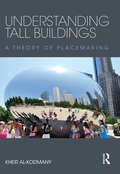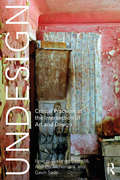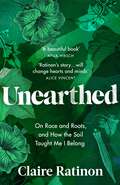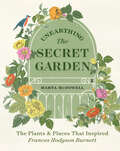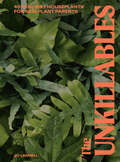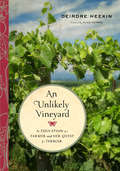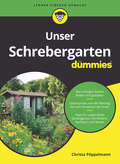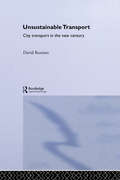- Table View
- List View
Underground Urbanism
by Elizabeth ReynoldsHave you ever wondered what lies beneath the streets of your city? Do you picture, in isolation, a series of train tunnels and pipes? Or perhaps the foundations of tall buildings that lie scattered, like icebergs, beneath the surface? As our cities grow up, out, and down, it is time we better understood how the different layers of these complex urban environments relate to one another. Underground Urbanism seeks to provide a new perspective on our cities, and consider how this might be used to engage more positively with them. So, tip your cities upside down to have a closer look, and let us rethink them from (below) the ground, up.
Underground Urbanism
by Elizabeth ReynoldsHave you ever wondered what lies beneath the streets of your city? Do you picture, in isolation, a series of train tunnels and pipes? Or perhaps the foundations of tall buildings that lie scattered, like icebergs, beneath the surface? As our cities grow up, out, and down, it is time we better understood how the different layers of these complex urban environments relate to one another. Underground Urbanism seeks to provide a new perspective on our cities, and consider how this might be used to engage more positively with them. So, tip your cities upside down to have a closer look, and let us rethink them from (below) the ground, up.
Understanding Metropolitan Landscapes
by Andrew MacKenzieUnderstanding Metropolitan Landscapes considers and reflects on the fundamental relationships between metropolitan regions and their landscapes. It investigates how planning and policy help to protect, manage and enhance the landscapes that sustain our urban settlements. As global populations become more metropolitan, landscapes evolve to become increasingly dynamic and entropic; and the distinction between urban and non-urban is further fragmented and yet these spaces play an increasingly important role in sustainable development. This book opens a key critical discussion into the relational aspects of city and landscape and how each element shapes the boundaries of the other, covering topics such as material natures, governance systems, processes and policy. It presents a compendium of concepts and ideas that have emerged from landscape architecture, planning, and environmental policy and landscape management. Using a range of illustrated case studies, it provokes discussions on the major themes driving the growth of cities by exploring the underlying tensions around notions of sustainable settlement, climate change adaption, urban migration, new modes of governance and the role of landscape in policy and decision making at national, provincial and municipal levels.
Understanding Metropolitan Landscapes
by Andrew MacKenzieUnderstanding Metropolitan Landscapes considers and reflects on the fundamental relationships between metropolitan regions and their landscapes. It investigates how planning and policy help to protect, manage and enhance the landscapes that sustain our urban settlements. As global populations become more metropolitan, landscapes evolve to become increasingly dynamic and entropic; and the distinction between urban and non-urban is further fragmented and yet these spaces play an increasingly important role in sustainable development. This book opens a key critical discussion into the relational aspects of city and landscape and how each element shapes the boundaries of the other, covering topics such as material natures, governance systems, processes and policy. It presents a compendium of concepts and ideas that have emerged from landscape architecture, planning, and environmental policy and landscape management. Using a range of illustrated case studies, it provokes discussions on the major themes driving the growth of cities by exploring the underlying tensions around notions of sustainable settlement, climate change adaption, urban migration, new modes of governance and the role of landscape in policy and decision making at national, provincial and municipal levels.
Understanding Site in Design Pedagogy (Routledge Focus on Design Pedagogy)
by Sean Burns Matthew WilsonThis book examines diverse ways of questioning, critiquing, and communicating site in the creative process of architecture, interior design, urban planning, and historical and cultural studies. The authors use the term site to connote a series of complex, established, or pre-existing conditions – a setting, an atmosphere, an area – to read, to interpret, to relate to, and to engage with, to redefine, or to create in relation to a design prompt. By acknowledging, accommodating, and empowering the physical, intellectual, and cultural characteristics of a site, students question its history, boundaries, posture, and situational aspects. Such inquiries promote a deeper appreciation of a site and thus help students to acknowledge its capacity to influence design throughout the iterative creative process. Understanding Site in Design Pedagogy adds to the body of literature on design studio pedagogy by presenting a collection of essays that challenge normative assumptions about what defines a site and its distinctive qualities. It poses a series of pedagogical questions for how sites might be diversely interpreted and introduced to design students. This study offers chapters that speak to site, memory, and lived experience; multi-scalar thinking about site; connecting to site through sensory phenomenon in interior design; alternate ways of engaging site for learning sustainable principles; and introducing unorthodox forms of site as the impetus to creative endeavours. It offers innovative approaches to scholarship of teaching and learning with respect to diverse readings of site within design education.
Understanding Site in Design Pedagogy (Routledge Focus on Design Pedagogy)
by Sean Burns Matthew WilsonThis book examines diverse ways of questioning, critiquing, and communicating site in the creative process of architecture, interior design, urban planning, and historical and cultural studies. The authors use the term site to connote a series of complex, established, or pre-existing conditions – a setting, an atmosphere, an area – to read, to interpret, to relate to, and to engage with, to redefine, or to create in relation to a design prompt. By acknowledging, accommodating, and empowering the physical, intellectual, and cultural characteristics of a site, students question its history, boundaries, posture, and situational aspects. Such inquiries promote a deeper appreciation of a site and thus help students to acknowledge its capacity to influence design throughout the iterative creative process. Understanding Site in Design Pedagogy adds to the body of literature on design studio pedagogy by presenting a collection of essays that challenge normative assumptions about what defines a site and its distinctive qualities. It poses a series of pedagogical questions for how sites might be diversely interpreted and introduced to design students. This study offers chapters that speak to site, memory, and lived experience; multi-scalar thinking about site; connecting to site through sensory phenomenon in interior design; alternate ways of engaging site for learning sustainable principles; and introducing unorthodox forms of site as the impetus to creative endeavours. It offers innovative approaches to scholarship of teaching and learning with respect to diverse readings of site within design education.
Understanding Tall Buildings: A Theory of Placemaking
by Kheir Al-KodmanyIn recent years, the rapid pace of tall building construction has fostered a certain kind of placelessness, with many new tall buildings being built out of scale, context and place. By analyzing hundreds of tall buildings and by providing hundreds of visuals that inspire, stimulate and engage, Understanding Tall Buildings contends that well-designed tall buildings can rejuvenate cities, ignite economic activity, support social life and boost city pride. Although this book does not claim to possess all the solutions, it does propose specific tall building design guidelines that may help to promote placemaking. Through this work, it is the author’s hope that ill-conceived developments will become less common in the future and that good placemaking will become the norm, not the exception. This book is a must-read for students and practitioners working to create better tall buildings and better urban environments.
Understanding Tall Buildings: A Theory of Placemaking
by Kheir Al-KodmanyIn recent years, the rapid pace of tall building construction has fostered a certain kind of placelessness, with many new tall buildings being built out of scale, context and place. By analyzing hundreds of tall buildings and by providing hundreds of visuals that inspire, stimulate and engage, Understanding Tall Buildings contends that well-designed tall buildings can rejuvenate cities, ignite economic activity, support social life and boost city pride. Although this book does not claim to possess all the solutions, it does propose specific tall building design guidelines that may help to promote placemaking. Through this work, it is the author’s hope that ill-conceived developments will become less common in the future and that good placemaking will become the norm, not the exception. This book is a must-read for students and practitioners working to create better tall buildings and better urban environments.
Undesign: Critical Practices at the Intersection of Art and Design
by Gretchen Coombs Andrew McNamara Gavin SadeUndesign brings together leading artists, designers and theorists working at the intersection of art and design. The text focuses on design practices, and conceptual approaches, which challenge the traditional notion that design should emphasise its utility over aesthetic or other non-functional considerations. This publication brings to light emerging practices that consider the social, political and aesthetic potential of "undesigning" our complex designed world. In documenting these new developments, the book highlights the overlaps with science, engineering, biotechnology and hacktivism, which operate at the intersection of art and design.
Undesign: Critical Practices at the Intersection of Art and Design
by Gretchen Coombs Andrew McNamara Gavin SadeUndesign brings together leading artists, designers and theorists working at the intersection of art and design. The text focuses on design practices, and conceptual approaches, which challenge the traditional notion that design should emphasise its utility over aesthetic or other non-functional considerations. This publication brings to light emerging practices that consider the social, political and aesthetic potential of "undesigning" our complex designed world. In documenting these new developments, the book highlights the overlaps with science, engineering, biotechnology and hacktivism, which operate at the intersection of art and design.
Unearthed: On race and roots, and how the soil taught me I belong
by Claire Ratinon'A beautiful book about nature...I recommend it' Afua HirschA beautiful work of nature-writing, memoir and storytelling that will change the way we think about the natural worldUnearthed is the story of how, after years of a troubled relationship with the land of her birth, Claire Ratinon found belonging through falling in love with growing plants and reconnecting with nature. Like many diasporic people of colour, Claire grew up feeling cut off from the natural world. She lived in cities, reluctant to be outdoors and stuck with the belief that success and status could fill the space where belonging was absent. Through learning the practice of growing food, she unpicked her beliefs about who she ought to be. Over her first year living in the English countryside and with the first vegetable patch of her own, she finds a pathway back to nature's embrace. And through growing the food of Mauritius, recording her parents' stories and exploring the history of the island, she also strengthens her connection to her homeland.A beautiful work of nature-writing, memoir and storytelling, Unearthed urges us to look to the world outside for the belonging and home we seek. It is a heartfelt call to reconsider our history, the way we think about nature and the complex relationships we all have with the land.
Unearthing The Secret Garden: The Plants and Places That Inspired Frances Hodgson Burnett
by Marta McDowellMarta McDowell returns with a beautiful, gift-worthy account of how plants and gardening deepy inspired Frances Hodgson Burnett, author of the beloved children's classic The Secret Garden.
The Unexpected Houseplant: 220 Extraordinary Choices for Every Spot in Your Home
by Tovah MartinComprehensive, up-to-the-minute, and gorgeously photographed, The Unexpected Houseplant is for beginners, green thumbs, decorators, and anyone who wants to infuse a bit of surprising green into their décor.
Unfinished Places: The Politics of (Re)making Cairo’s Old Quarters
by Gehan SelimThe Emerging Politics of (Re) making Cairo's Old Quarters examines postcolonial planning practices that aimed to modernise Cairo’s urban spaces. The author examines the expanding field of postcolonial urbanism by linking the state’s political ideologies and systems of governance with methods of spatial representations that aimed to transform the urban realm in Cairo. Adopting an interdisciplinary approach, the study draws on planning, history and politics to develop a distinctive account of postcolonial planning in Cairo following Egypt’s 1952 revolution. The book widely connects the ideological role of a different type of politicised urbanism practised during the days of Nasser, Sadat and Mubarak and the overarching policies, institutions and attitudes involved in the visions for (re) building a new nation in Egypt. By examining the notion of remaking urban spaces, the study interprets the ambitions and powers of state policies for improving the spatial qualities of Cairo’s old districts since the early 20th century. These acts are situated in their spatial, political and historical contexts of Cairo’s heterogeneous old quarters and urban spaces particularly the remaking of one of the city’s older quarts named Bulaq Abul Ela established during the Ottoman rule in the thirteenth century. It therefore writes, in a chronological sequence, a narrative through time and space connecting various layers of historical and contemporary political phases for remaking Bulaq. The endeavor is to explain this process from a spatial perspective in terms of the implications and consequences not only on places, but also on the people’s everyday practices. By deeply investigating the problems and consequences; the strengths and weaknesses; and the state’s reliability to achieve the remaking objectives, the book reveals evidence that shifting forms of governance had anchored planning practices into a narrow path of creativity and responsive planning.
Unfinished Places (Re)making Cairo’s Old Quarters: The Politics Of (re)making Cairo's Old Quarters
by Gehan SelimThe Emerging Politics of (Re) making Cairo's Old Quarters examines postcolonial planning practices that aimed to modernise Cairo’s urban spaces. The author examines the expanding field of postcolonial urbanism by linking the state’s political ideologies and systems of governance with methods of spatial representations that aimed to transform the urban realm in Cairo. Adopting an interdisciplinary approach, the study draws on planning, history and politics to develop a distinctive account of postcolonial planning in Cairo following Egypt’s 1952 revolution. The book widely connects the ideological role of a different type of politicised urbanism practised during the days of Nasser, Sadat and Mubarak and the overarching policies, institutions and attitudes involved in the visions for (re) building a new nation in Egypt. By examining the notion of remaking urban spaces, the study interprets the ambitions and powers of state policies for improving the spatial qualities of Cairo’s old districts since the early 20th century. These acts are situated in their spatial, political and historical contexts of Cairo’s heterogeneous old quarters and urban spaces particularly the remaking of one of the city’s older quarts named Bulaq Abul Ela established during the Ottoman rule in the thirteenth century. It therefore writes, in a chronological sequence, a narrative through time and space connecting various layers of historical and contemporary political phases for remaking Bulaq. The endeavor is to explain this process from a spatial perspective in terms of the implications and consequences not only on places, but also on the people’s everyday practices. By deeply investigating the problems and consequences; the strengths and weaknesses; and the state’s reliability to achieve the remaking objectives, the book reveals evidence that shifting forms of governance had anchored planning practices into a narrow path of creativity and responsive planning.
University Spatial Development and Urban Transformation in China
by Cui LiuThe past few decades have seen universities take on a leading role in urban development, actively providing public services beyond teaching and research. The relationship between the university and the city has great influence on the space of university, which is vividly reflected in the process of university spatial development. This process has been particularly evident in China as Chinese universities and cities have been undergoing dramatic transformations since reform in the late 1970s. University Spatial Development and Urban Transformation in China explores the changing relationship between the university and the city from a spatial perspective. Based on theories and discourses on the production of space, the book analyzes case studies in university spatial development in China at three scales – global, national and local – covering social and urban contexts, the urban transformation, interactions in the development process and the changing dynamic between university and city to propose mutually beneficial planning strategies. This book is a valuable resource for academics, researchers and urban planners in identifying the key factors and relationships in university spatial development using theoretical and empirical data to guide future urban planning.
University Spatial Development and Urban Transformation in China
by Cui LiuThe past few decades have seen universities take on a leading role in urban development, actively providing public services beyond teaching and research. The relationship between the university and the city has great influence on the space of university, which is vividly reflected in the process of university spatial development. This process has been particularly evident in China as Chinese universities and cities have been undergoing dramatic transformations since reform in the late 1970s. University Spatial Development and Urban Transformation in China explores the changing relationship between the university and the city from a spatial perspective. Based on theories and discourses on the production of space, the book analyzes case studies in university spatial development in China at three scales – global, national and local – covering social and urban contexts, the urban transformation, interactions in the development process and the changing dynamic between university and city to propose mutually beneficial planning strategies. This book is a valuable resource for academics, researchers and urban planners in identifying the key factors and relationships in university spatial development using theoretical and empirical data to guide future urban planning.
The Unkillables: 40 resilient house plants for new plant parents
by Jo LambellFeaturing over 40 cool, high-maintenance-looking plants, The Unkillables will ensure your put your plant-murdering days firmly in the past, and will transform your home into the gorgeous green space you always dreamed of. Are you a plant killer? There's nothing more heart-breaking than bringing your new plant baby home, only to have it die a slow death in front of your very eyes. Was it too much water? Not enough sunlight? A drafty corner? The reasons for planticide can seem endless!In The Unkillables, Jo Lambell shares her houseplant knowledge so that even the biggest plant serial killers can have an abundant indoor garden. Jo will take the fear out of the unknown and equip those with no green fingers at all with the skills they need to keep their plants alive and thriving. Plants can be a little intimidating – with their fancy Latin names, complex terminology and 'just look at me and I'll perish' reputation – so choosing hardy, tolerant plants is the best place to start. Jo walks you through the basics of care – light, water, location – as well as sharing information on repotting, propagating, cleaning, First Aid and more.
The Unknown World of the Mobile Home (Creating the North American Landscape)
by John Fraser Hart Michelle J. Rhodes John T. MorganIn American popular imagination, the mobile home evokes images of cramped interiors, cheap materials, and occupants too poor or unsavory to live anywhere else. Since the 1940s and '50s, however, mobile home manufacturers have improved standards of construction and now present them as an affordable alternative to conventional site-built homes. Today one of every fourteen Americans lives in a mobile home. In The Unknown World of the Mobile Home authors John Fraser Hart, Michelle J. Rhodes, and John T. Morgan illuminate the history and culture of these often misunderstood domiciles. They describe early mobile homes, which were trailers designed to be pulled behind automobiles and which were more often than not poorly constructed and unequal to the needs of those who used them. During the 1970s, however, Congress enacted federal standards for the quality and safety of mobile homes, which led to innovation in design and the production of much more attractive and durable models. These models now comply with local building codes and many are designed to look like conventional houses. As a result, one out every five new single-family housing units purchased in the United States is a mobile home, sited everywhere from the conventional trailer park to custom-designed "estates" aimed at young couples and retirees. Despite all these changes in manufacture and design, even the most immobile mobile homes are still sold, financed, regulated, and taxed as vehicles.With a wealth of detail and illustrations, The Unknown World of the Mobile Home provides readers with an in-depth look into this variation on the American dream.
An Unlikely Vineyard: The Education of a Farmer and Her Quest for Terroir
by Deirdre Heekin Alice FeiringNamed one of the Best Wine Books of 2014 by The New York Times, An Unlikely Vineyard tells the evolutionary story of Deirdre Heekin’s farm from overgrown fields to a fertile, productive, and beautiful landscape that melds with its natural environment. Is it possible to capture landscape in a bottle? To express its terroir, its essence of place—geology, geography, climate, and soil—as well as the skill of the winegrower? That’s what Heekin and her chef/husband, Caleb Barber, set out to accomplish on their tiny, eight-acre hillside farm and vineyard in Vermont. But An Unlikely Vineyard involves much more. It also presents, through the example of their farming journey and winegrowing endeavors, an impressive amount of information on how to think about almost every aspect of gardening: from composting to trellising; from cider and perry making to growing old garden roses, keeping bees, and raising livestock; from pruning (or not) to dealing naturally with pests and diseases. As Eric Asimov, chief wine critic for The New York Times, writes, “I love this book, which conveys beautifully why the best wine is, at heart, an agricultural expression.” Challenged by cold winters, wet summers, and other factors, Deirdre and Caleb set about to grow not only a vineyard, but an orchard of heirloom apples, pears, and plums, as well as gardens filled with vegetables, herbs, roses, and wildflowers destined for their own table and for the kitchen of their small restaurant. They wanted to create, or rediscover, a sense of place, and to grow food naturally using the philosophy and techniques gleaned from organic gardening, permaculture, and biodynamic farming. Accompanied throughout by lush photos, this gentle narrative will appeal to anyone who loves food, farms, and living well.
Unplugging the City: The Urban Phenomenon and its Sociotechnical Controversies
by Fábio Duarte Rodrigo Jose FirminoModernity has entrusted technology with such power that it is treated as an autonomous entity, with its own manners and morals. Technological disruptions are also socially disruptive: technological failures reveal both the constituents of the technology itself and the social fabric woven by this technology. Cities are the quintessential technological arrangement, not only materially but also as a conceptual framework: the ubiquity of technology makes us think and plan cities mostly in terms of technological arrangements. Unplugging the City: The Urban Phenomenon and its Sociotechnical Controversies proposes a conceptual and methodological framework for analyzing certain urban phenomena as a technological assemblage. It demonstrates, through multiple case studies, the sociotechnical complexities involved in the stabilization and disruption of urban technological arrangements. Examples range from the urban phantasmagorias portrayed in science-fiction movies to the urban proposals of Brasilia and Masdar, from the book of bike-sharing systems to pervasive global surveillance systems. Written by Fábio Duarte and Rodrigo Firmino, based on their original research and publications, this is an essential resource for those interested in the theory and study of technology and its inextricable influence on the city.
Unplugging the City: The Urban Phenomenon and its Sociotechnical Controversies
by Fábio Duarte Rodrigo Jose FirminoModernity has entrusted technology with such power that it is treated as an autonomous entity, with its own manners and morals. Technological disruptions are also socially disruptive: technological failures reveal both the constituents of the technology itself and the social fabric woven by this technology. Cities are the quintessential technological arrangement, not only materially but also as a conceptual framework: the ubiquity of technology makes us think and plan cities mostly in terms of technological arrangements. Unplugging the City: The Urban Phenomenon and its Sociotechnical Controversies proposes a conceptual and methodological framework for analyzing certain urban phenomena as a technological assemblage. It demonstrates, through multiple case studies, the sociotechnical complexities involved in the stabilization and disruption of urban technological arrangements. Examples range from the urban phantasmagorias portrayed in science-fiction movies to the urban proposals of Brasilia and Masdar, from the book of bike-sharing systems to pervasive global surveillance systems. Written by Fábio Duarte and Rodrigo Firmino, based on their original research and publications, this is an essential resource for those interested in the theory and study of technology and its inextricable influence on the city.
Unser Schrebergarten für Dummies (Für Dummies)
by Christa PöppelmannIm eigenen Schrebergarten gestalten und walten, hegen und pflegen oder einfach auf einer Bank in der Sonne das Wochenende genießen! Klingt das gut? Dann ist dieses Buch genau das Richtige für Sie. Erfahren Sie, wie Sie einen Schrebergarten pachten, worauf Sie sich in einem Schrebergartenverein einlassen, wie Sie Ihren Garten planen, eine Laube errichten, die richtigen Pflanzen für Ihrer Garten aussuchen und schon bald stolz Ihre ersten Tomaten oder Beeren ernten können.
Unsustainable Transport: City Transport in the New Century (Transport, Development and Sustainability Series)
by David BanisterThis book addresses the links between transport and sustainable urban development, from an analysis of the global picture to issues in transport and energy intensity, public policy and the institutional and organisational constraints on change. The central part of the book explores these links in more detail at city level, covering land use and development, economic measures, and the role that technology can play. The final part looks for inspiration from events in developing countries and the means by which we can move from the unsustainable present to a more sustainable future.
Unsustainable Transport: City Transport in the New Century (Transport, Development and Sustainability Series)
by David BanisterThis book addresses the links between transport and sustainable urban development, from an analysis of the global picture to issues in transport and energy intensity, public policy and the institutional and organisational constraints on change. The central part of the book explores these links in more detail at city level, covering land use and development, economic measures, and the role that technology can play. The final part looks for inspiration from events in developing countries and the means by which we can move from the unsustainable present to a more sustainable future.
